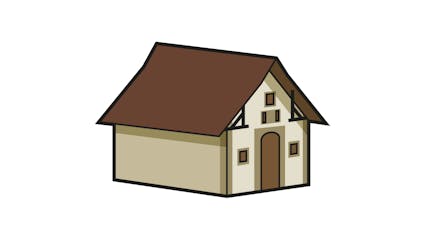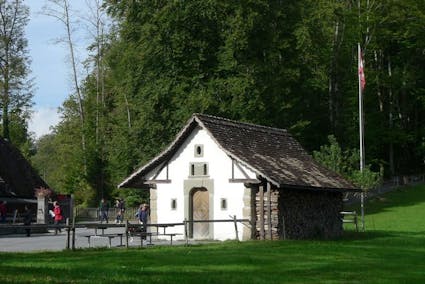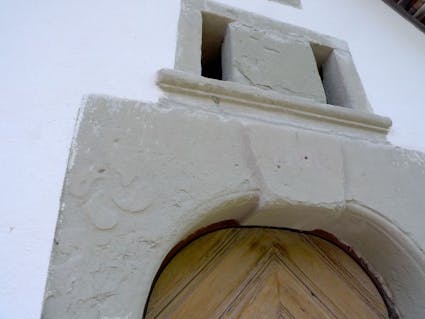312 – Oven house from Oberwangen BE, 1796
This oven house was part of a licensed milling plant comprising the mill, a farmhouse, a barn and a granary.

Part of a whole
This oven house was part of a licensed milling plant comprising the mill, a farmhouse, a barn and a granary. The oven house was thus a part of a functional unit: there, next to where the farmers delivered the grain, the flour could also be periodically baked into bread by the miller or his lessor. The separate baking facilities reduced the risk of fire in the main house whilst allowing good control in a masonry building.

Multifunctional
As is often the case in such ancillary buildings, the oven house from Oberwangen served several purposes. Fruit was dried and the laundry tub’s water was heated here.
Beginning and end
The keystone in the centre of the door arch bears a faintly painted date of 1796, no doubt the building year. The decorative forms and heraldry chiselled into the sandstone has weathered badly in the intervening 200 years and crumbled away. The oven house remained out of service for decades. The last miller, Fritz Hofstetter, died in 1970. In 1976 the oven house was re-erected in Ballenberg.

Alone or together?
Multipurpose, polyvalence, multitasking and synergy are buzzwords of the modern world. They aim at one thing: the matter of organisation. While other words may have been chosen, the same thoughts were harboured in other ages. Certain work was performed in common by several families or by the neighbourhood or by a part of the community. Cooperation was more rational than going it alone. Washing, baking, drying, slaughtering (hot water for depilation) or brewing alcohol were energy-consuming tasks. Why should each farmer alone raise a fire from nothing on separate days and use up his firewood? Such things were better done in common on the same day: once the fire was raised people could alternate the work and far less wood was consumed. Only one building was needed, one set of equipment sufficed – one farm alone could hardly have afforded it all or found the time.
Ballenberg
Swiss Open-Air Museum
Museumsstrasse 100
CH-3858 Hofstetten bei Brienz
Opening hours
11 April to 27 October 2024
10 am to 5 pm daily